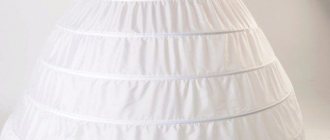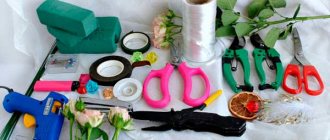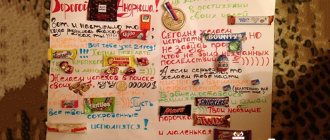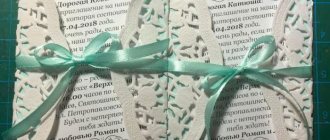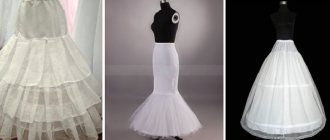For many years, a petticoat was a mandatory attribute of a woman's wardrobe. It was used to add volume to ballgowns, then in the 50s and 60s. For several decades, the petticoat went out of everyday use. But fashion is cyclical and today its use can again be relevant not only at weddings and children's parties, but also on weekdays.
Necessary materials and tools for work
Tulle fabric is very light, but it also holds its shape well and fits well into folds. The material is very elegant, so it is used for sewing things for children's parties or weddings.
What does the material look like?
Note! Tulle comes in several types and can have both large and small cells; the rigidity of the fabric depends on their size. Tulle is also easy to dye and has a wide range of colors.
A thick and fluffy tulle petticoat goes very well with a circle skirt. The average length of the skirt, lush ripples of material on matte tulle - all this creates the image of a dude. A regular full petticoat will be in the form of a rectangle, and its top will gather at the waist.
Direct version of the product
A lighter and smoother petticoat looks good on a dress of medium length or slightly below the knees. It will create a cute look without restricting movement.
On floor-length dresses, tiered petticoats are always used, which expand from tier to tier. There is also a type called a petticoat with frills. It has a small disadvantage - a lot of fabric consumption, but it's worth it. There are no special rules when sewing or choosing material; basically, the decision must be made on the style of the dress, as well as the fabric from which the petticoat will be sewn.
Sewing tips
After reading this article, you can easily sew a petticoat for a child like a real craftsman, without turning to professionals in an atelier. But you should follow simple sewing tips.
- You can’t turn a blind eye to the choice of color; this is one of the important details. The shade of the material from which the petticoat will be sewn should be slightly darker than the dress itself, otherwise the girl will look ridiculous because of the see-through petticoat.
- The number of frills needs to be increased to make the product more voluminous, and therefore more festive.
- But everyone decides for themselves whether to use hoops or not, it all depends on whether it will be convenient or not.
Do-it-yourself tulle petticoat: step-by-step instructions
You can sew a petticoat in different ways.
Classic version
For the classic sewing method, you need to take measurements and prepare everything you need for work. The choice of fabric color depends on the preferences of the person who will wear the item. It is best to choose tulle in the same color as the skirt or dress. But the material can also be painted with acrylic paints to match or you can make a chic gradient on the fabric.
Sewing tools:
First you need to measure your waist circumference and multiply by two. The length will be arbitrary. A petticoat made of rigid tulle can have up to three layers. To sew it, you need to fold the tulle, clamp it and stitch along the entire length, closing the circle. Next, bend the top part by 3 cm and stitch, leaving space to insert the elastic later. Hook the rubber with a needle, insert it into the designated area and sew it up. Distribute the fabric over the entire elastic band. All is ready.
Lush
A skirt like the one in the photo will be made of tulle frills along its entire length.
Required materials for sewing:
Important! The base is needed to make the petticoat practical and comfortable to wear, and also to make it easier to attach the tulle.
You need to cut four identical parts from the lining. Their sizes can be calculated as follows:
The cut parts need to be sewn into one whole.
Cut tulle flaps of 1.5 m by 30 cm, fold them in half and sew them into the base in even folds from bottom to top, laying them in layers so that the top covers the bottom by 3 cm. How many frills are needed depends on the length of the skirt.
For a dress in the style of a dude
Required materials for sewing:
The base of the skirt should be done in the same way as in the previous version. The skirt can be sewn according to any pattern you like. Tulle flaps are cut one-quarter the width of the entire skirt and four times the length of the waist. Layers need to be doubled.
A rim of satin ribbon is made on the bottom strip and stitched along the short side. Then you need to make folds by pulling the stitch thread. And so with every detail. Next, they need to be sewn together and stitched to the base of the skirt. The dress with a petticoat like the dudes is ready.
How to sew a petticoat for a children's dress
First, it’s worth understanding the main details of this product. If you have no experience in sewing products, then you need to think through everything in advance so that the dress does not rise, and the petticoat is not visible from under it, does not scratch the girl’s skin and does not interfere with her movement. First you need to decide what fabric will be used in the work. In this case, it is better to choose tulle. It creates volume well and holds its shape, and is also very durable. Then you need to decide what volume is preferable.
It also depends on the fullness of the skirt or dress used, under which the petticoat will be sewn.
The best style for sewing is “Tatyanka”. Basically, such skirts are made from lightweight materials, because they have a lot of gathers at the waist. But in essence, the rigidity of the material will depend on the rigidity of the dress or skirt itself. A child's petticoat made of tulle will look very beautiful, especially if it is made in several layers for maximum volume.
Product style “Tatyanka”
When making a petticoat for a child yourself, you can look at ready-made options and add a yoke to the petticoat. Each layer of tulle must be stitched under the level of the base of the product or gathered into a stitch.
Next, you should evenly pin the tulle frill and the warp strip, and then sew everything together on a machine. You also need to determine where the middle of each side is and make the percentage of the fabric pieces.
Note! The distance to which the base will need to be assembled should be about 9 cm.
The gathers are placed under the presser foot and slowly sewed together. To begin with, of course, it is better to try to connect the tiers to each other. Then, when sewing, tulle, the main creator of volume, will not fly off during stitching. You can also take a ready-made crinoline and stitch tulle on it.
Crinolines with frills made of fabric or mesh
How to cut insoles to fit shoes. how to make insoles with your own hands? what to make insoles from
A very good option for a relatively affordable price and acceptable quality are crinolines with frills. They can be made of mesh or thick fabric. The design of such products consists of crinoline, rigid rings and frills sewn on top of them.
This combination of material and elements allows it to hold its shape very well, not sag under the fabric of the dress, not show through or stand out. But there is still one drawback - if the bride makes an unsuccessful move, the crinoline will be revealed to everyone around in all its beauty.
If the bride has the opportunity to overpay a little and buy a crinoline with frills instead of the usual one, then she should buy it. The difference between how a dress with these two crinolines will look is colossal.
How to decorate a petticoat for a girl
To make the petticoat sparkle, you can decorate it in an original way so that no one else has it. In this matter you need to give free rein to your imagination. For example, the edge of a skirt can be sewn with a beautiful satin ribbon.
You can sew small flowers made of fabric or leather onto the petticoat. You can also decorate with beads, feathers, rhinestones, and beads. A fluffy light skirt with the addition of natural fur will look luxurious. If a girl plays the role of a princess or Snow Maiden, then tinsel can be sewn along the edge. If you are preparing a ladybug costume, then circles made of dark velvet will look beautiful on the petticoat, and the skirt itself can be red.
Note! The main thing is to discuss the decoration of the skirt with your child, listen to his preferences and decorate the product together.
Young girls prefer to wear tutu skirts. You can also use this material to sew identical dresses for bridesmaids for a wedding.
This fabric requires careful care. Here are some tips:
A tulle petticoat will look elegant and light. It can be worn in the summer in everyday life, combined with different elements of clothing, for a holiday, decorated with different colors, etc. The price of tulle is low compared to other fabrics (from 80 rubles * per 1 m). Moreover, thanks to this article, you can save some money and sew the product yourself. It's easy and simple.
*Prices are as of June 2022.
Source
How to sew a petticoat?
join the discussion
Share with your friends
Of all the accessories for a wedding dress, the most “modest” and most inconspicuous is the petticoat. He has a lot of merit to his credit. It will create volume, give shape, add elegance, and make the look modest with a see-through overskirt.
This element is vital for princess-style dresses, A-line dresses and short new-look dresses. Therefore, we will consider with you different options for sewing a wedding petticoat, and you can use the model you like for other important outfits.
Simple
It’s impossible to come up with a simpler design than the Tatyanka petticoat. Here you don’t need any special skills to sew it yourself.
First you need to take measurements. This is the circumference of the hips and the length of the petticoat.
To find out the waist width, multiply the hip circumference by the fit factor. Its value is in the range of 1.5-3.5 times. Here it’s up to you to decide how full the skirt will be. The main thing to take into account is that the stiffer the fabric, the lower the coefficient will be.
The length is measured from the waist or where the petticoat will be located to the desired length. However, it should be shorter than the dress.
Now we take a rectangular piece of fabric according to the measurements. You can take any lining fabric that holds its shape well. It is advisable to steam it first so that when washing the finished product there is no shrinkage. Cotton fabric is lined. You can also take mesh (tulle), but in this case the volume at the waist will be large.
Finish the side edges with a double seam or an overlock stitch. Then grind them down. Finish the top and bottom edges with a closed hem stitch. At the same time, leave room in the upper cut for stretching the elastic. The bottom hem should be wider so that the bottom of the skirt holds its shape better. And for rigidity, you can insert a fishing line or crossbar.
Be sure to steam all seams thoroughly. After threading the elastic, sew its ends together into a ring.
A master class on sewing a simple petticoat is in the video below.
Source
For a dress in the style of a dude
A vibrant vintage wedding look needs the same foundation. Very lush and optionally multi-colored.
Therefore, we take the yoke as a basis, and the underskirt will be made of multi-layered 3-tier soft tulle. Hard ones can tear tights.
Cutting and sewing layers
To sew an American petticoat, you only need to decide on the length, waist size and number of layers.
The length of the underskirt should be divided by three to get the width of the frill. The length of the 1st tier is calculated by multiplying the waist size by 2. The second - by multiplying by 4 and the length of the 3rd tier - by multiplying by 8. For example, with a volume of 60 cm, the result is 120 cm; 240cm and 480cm.
Cover the bottom of the last tier with satin trim or lace, and pull the top cut to the length of the second tier (240 cm). Stitch them together.
Also pull the top cut of the second tier to the length of the first (120 cm). Sew the first tier to the second. The first layer is ready. Make subsequent layers as you did the first.
To make the top of the petticoat more rigid, the yoke in the first layer can be made of satin.
Belt
Measure the exact length of the belt and sew the side sections to the middle. Iron the seam.
- Fold the waistband in half lengthwise and iron the fold along the right side.
- Place the skirt and belt facing each other and stitch.
- Bend the second cut by 8 mm and baste it to the top cut of the skirt from the wrong side, overlapping the seam of the belt by 2 mm. Then secure the waistband with blind stitches or stitch along the seam on the right side of the skirt.
- Sew 4 lines on the waistband and pull the elastic through the holes in the side seam. Sew the elastic bands into a ring and then tuck them inside.
A not very fluffy petticoat made of three layers looks like this.
How to sew a petticoat with your own hands - what material should you choose?
Petticoats can be varied in length, style, layering and stiffness.
For wedding dresses, a rigid cone with rings is often used. This will allow you to sew a petticoat that is light and holds its shape well.
For the hard version, tulle is used. It can vary in hardness, but the most rigid tulle is most suitable. Often one layer of tulle is enough to add volume. True, his main drawback is his causticity. He scratches his legs and sometimes tears his tights. Therefore, craftswomen usually add a layer of soft fabric between the body and the petticoat.
Soft tulle is not very suitable for a petticoat. It will require several layers, which increases fabric consumption. But from such tulle you can sew a popular tutu skirt and wear it as a petticoat or separately.
Choosing a petticoat style
The simplest style is a rectangle of fabric pulled at the waist with a belt or elastic band. Tatyanka skirts are sewn in a similar way. If the tulle is stiff and the resulting volume is sufficient, the petticoat is ready.
For greater volume, several layers are joined together. To prevent the design from being bulky or heavy, the petticoat is made in a single layer and with rings. This is suitable for evening or ball gowns.
Another style of petticoat is A-line with flounces and frills. It adds volume smoothly, suitable for children's dresses. For production you will need soft tulle in several layers. It is this kind of petticoat that will be discussed in the master class below.
How to sew a fluffy petticoat from tulle
Full skirts in the New Look style were very popular in the 50s and 60s. Mostly they were worn with petticoats, which made these skirts so fluffy.
This petticoat is also perfect for long, fluffy wedding and ballroom skirts, both gathered at the waist and flared, such as sun and half sun. In addition, the petticoat adds fullness to the overskirt and replaces the lining.
There are different types of petticoats: hard and soft, fluffy and smooth, with tiers and with frills. Which to choose? It all depends on the purpose (for example, if you need a wedding petticoat), the style (for example, a petticoat for a dress with a train), and the fabric of the overskirt.
The simplest full petticoat is a rectangle of fabric, gathered at the waist, with the top gathered with an elastic band.
A more complicated option, but the most often used, is a fuller petticoat for a dress, expanding towards the bottom. It is made in tiers. For it, you can take a pattern of any multi-tiered skirt from a magazine. For example, step skirt, model 123 from Burda 3/2013.
A master class on BurdaStyle.ru tells how to sew a tulle skirt in several tiers.
So that, for example, a wedding petticoat of this type holds its shape better, it is sewn from hard tulle.
From this master class, you will learn how to sew another version of a fluffy petticoat under a dress - with frills. It can be sewn from both hard and soft tulle.
The advantage of a fluffy petticoat with frills is that it is entirely made of soft tulle, so it is light, fluffy and comfortable to wear. Hard tulle clings to tights, the edges and seams can prick the legs, but this does not happen with soft tulle.
In this design, all the seams are under the frills on the outside of the petticoat, and the whole half-skirt goes to the body, so such problems do not arise.
Due to the frills overlapping each other, a soft transition from one frill to another is obtained. In addition, due to the large number of layers and the density of the frills, the petticoat becomes opaque, which allows it to be used for dresses made of transparent fabrics - tulle, chiffon, lace.
The bottom of the petticoat turns out to be very “thick”, multi-layered; in short skirts it can be made to peek out from under the overskirt, which will add elegance to the dress.
To work, you will definitely need good scissors (buy at the Burda store), pins for thin fabrics (buy at the Burda store) and a convenient fabric marker (buy at the Burda store).
The only downside to a frilly petticoat is that it requires a lot of fabric.
Petticoat cut
Step 1
The basis of a full petticoat is a half-sun skirt. Rows of frills are sewn onto it. The top of the skirt is gathered with elastic.
To build a skirt, we need to calculate two radii: Radius 1 (R1) - for the waist with an elastic band, so the girth of the skirt at the top should be such that the skirt can be easily put on. Let's take the Hip Circumference (HR) + 10 cm, hence R1 = (HR + 10): 3.14 Radius 2 (R2) is the bottom of the skirt, so it is equal to the length of the skirt plus R1 R2 = R1 + Length of the skirt (see diagram)
We fold the fabric in half and draw two radii from the top edge of the fold; at the waist and side we give an allowance of 1-1.5 cm. There is no allowance needed at the bottom; the bottom of the tulle is not processed.
Step 2. Cut out the skirt
We unfold the skirt in one layer and mark the places where the frills will be sewn. To do this, step back 10-15 cm from the waist and draw a line. The top, longest frill will be sewn along it.
Divide the remaining length of the skirt into three parts if the skirt is to the floor and into two parts if the skirt is over the knee. I got 27 cm. Draw lines at equal intervals (see diagram).
To buy or not
Well, what bride doesn’t want to look beautiful at her wedding and feel comfortable with every move. No matter how beautiful a fluffy dress looks, the presence of petticoats in the image is in no way associated with convenience and comfort - this is precisely the opinion that most brides adhere to. It is also confusing that the petticoat can rise at the moment when the bride is in the arms of the groom. The case is quite curious and very common.
Don't blame the petticoat for being chosen incorrectly. The right petticoat will not behave like this, putting the bride in an uncomfortable position and providing inconvenience in any successful case.
So, let's look at the length. Too long will make every step difficult, and short will add incompleteness and even absurdity to the image. The most optimal length of this element in a wedding look is in the range of 120 - 150 cm. There is another principle for choosing the length of the petticoat - there should be from 10 to 30 cm to the floor.
So let's choose the right wedding element that is responsible for the splendor of your wedding dress and be amazed at how easy your movements remain and how much comfort you can experience.
